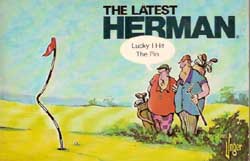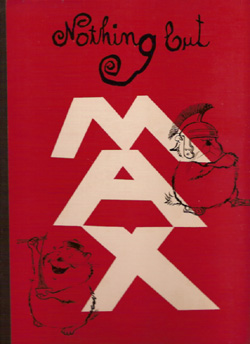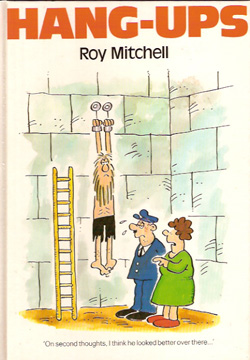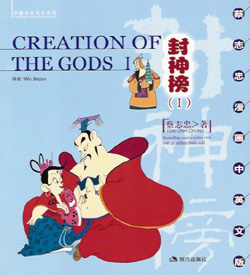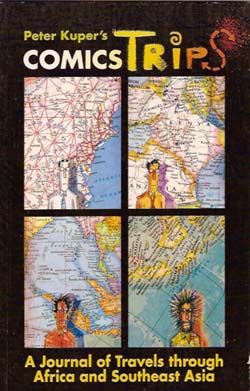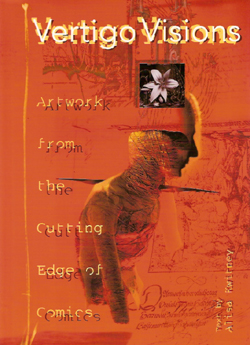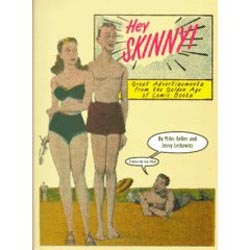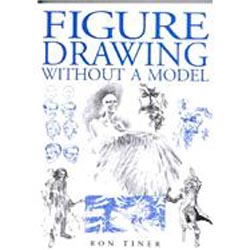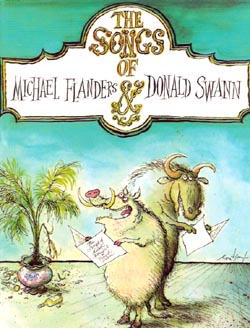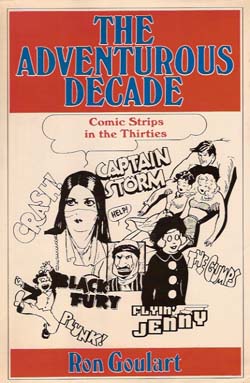
By Ron Goulart (Arlington House) ISBN: 0-87000-252-X
Softcover (Hermes Press) ISBN: 1-932563-70-9
Modern comics evolved from newspaper comic strips. These pictorial features were until very recently highly popular with the public and highly valued by publishers who used them as a powerful weapon to guarantee and even increase circulation – and profits. From the earliest times humour was paramount; hence the terms “Funnies†and of course, “Comicsâ€.
Despite the odd ancestor or precedent like Roy Crane’s Wash Tubbs (comedic when it began in 1924, it gradually moved from mock-heroics to light-action and became a full-blown adventure with the introduction of Captain Easy in 1929), or Tarzan (which began on January 7th 1929) and Buck Rogers (also January 7th 1929) – both adaptations of pre-existing prose properties – the vast bulk of strips produced were generally feel-good humour strips with the occasional child-oriented fantasy.
This changed in the 1930s when an explosion of action and drama strips were launched with astounding rapidity. Not just strips but actual genres were created in that decade which still impact on not just today’s comic-books but all our popular fiction.
This superb book from author, historian and strip writer Ron Goulart is considered the definitive text on the decade. It outlines the development of the strips, the creators and the legacy of this most incredible creative period in the history of graphic narrative. Written with captivating enthusiasm Goulart describes the rise of Buck Rogers, Flash Gordon and many other science-fiction strips; aviation serials like Smilin’ Jack, Flying Jenny and all the rest; Westerns like Red Ryder and the Lone Ranger; Cops ‘n’ Robbers, Detectives and Spies (Dick Tracy, Charlie Chan, Secret Agent X-9, etc.) and straight adventure strips like Terry and the Pirates and all the wonderful rest.
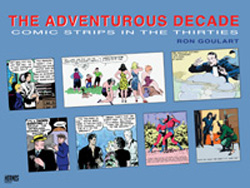
The Hermes Press paperback is produced in a landscape format with an addition 250 illustrations to supplement those in the hardback and highlights strips such as Buck Rogers, Flash Gordon, Tarzan, Scorchy Smith, Dick Tracy, Terry and the Pirates, Prince Valiant, The Phantom, Brick Bradford, The Spirit, and Don Winslow as well as lesser known examples like Bronc Peeler, Tex Thorne, Roy Powers, Dan Dunn and Tailspin Tommy. The text is also littered with contributions from Noel Sickles, Milton Caniff, Roy Crane, Alfred Andriola, Dick Moore, Mel Graff, Leslie Turner, Roy Crane, Milton Caniff, Hal Foster, Alex Raymond, Chester Gould, Fred Harmon and Frank Robbins.
It’s virtually impossible for us to understand the power and popularity of the comic strip in America from the Great Depression to the end of the Second World War. With no television, far from universal usage of radio, and movie shows at best a weekly treat for most people, household entertainment was mostly derived from the comic sections of daily and especially Sunday Newspapers. Comic strips were the most common recreation of untold millions of people who were well served by a fantastic variety and incredible quality. This brilliant book recaptures that time with powerful effect. It is a book we should all read and hopefully it will show you just how great an entertainment medium comics can be.
© 1975, 2007 Ron Goulart. All Rights Reserved.
